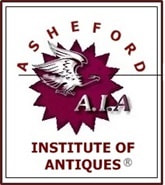 Savvy Dealers Sort Gems From The Junk Savvy Dealers Sort Gems From The Junk New York - For those in the antique and vintage business, hitting thrift stores to stock up on inventory can often feel like a bit of a treasure hunt. The lure of the hidden find is always there in the back of one's mind, but in reality, how practical is it to expect a walk-in win at many of these second-hand venues, especially considering the public's current interest and craze for scouring out anything old, vintage, and retro themselves? Well, according to some dealers in-the-know, the chances of scoring are still pretty good - providing you're aware of what's selling in today's decorative arts marketplace.  Branded Textiles Popular Branded Textiles Popular Christa Blanchard, a longtime textile seller in upstate New York, says location can mean everything when it comes to the art of buying at thrift stores (aka, thrifting). "For me, the wealthy neighborhoods definitely have a lot more inventory to offer, but it usually comes with a higher price," says Blanchard. “Stores in these areas tend to have employees who know what's valuable and what's not." Blanchard feels that while she may pay more for certain items such as name brands like Armani denim, or middling couture items from Michael Kors, the final return on investment is usually always going to be better. "I'm buying from rich neighborhoods, but selling in middleclass ones," says Blanchard, "It's a good way to turnover inventory from one geographic location to another, while making some money in the process." Although there's now more competition from everyday buyers, Blanchard believes that many of the best deals can still go unclaimed. "I once forgot a vintage Chanel scarf that I'd seen in a bin at one of my favorite thrifts," says Blanchard, "but when I came back two weeks later, it was still there." While noting that not all of her outings are outright wins, Blanchard attributes the majority of her thrifting success to simply being prepared. "It really helps to know what you're looking for if you want to profit from it," she says.  Mexican Ceramics Mexican Ceramics However, not all dealers believe you have to move upmarket to find the best deals. Donny Walsh, a purveyor of fine Pyrex products, and other collectibles, says that his inventory comes almost exclusively from thrifting in lower-rent neighborhoods in Los Angeles and outlying suburban areas. "I've always had good luck finding stock in rundown areas of big cities rather than the affluent parts of town," says Walsh, who chalks up the diversity of his finds to the multicultural aspect of the neighborhoods he visits. "Some of the thrifts I attend are in predominantly Latino communities, so many of the items being sold tend to reflect this heritage." Walsh says aside from his Pyrex collecting he's purchased a number of Barro Negro ceramic pieces over the years, as well as other pottery originally sourced from Mexico. "There aren't a tremendous amount of dealers scouring these neighborhoods, because most of these thrift stores are providing essential goods to people rather than merely decorative arts items for one to look at," says Walsh. But that doesn't mean deals can't be found. According to Walsh some of the best pieces he's picked up, including some Atzompa green-glazed ceramics, were literally in plain sight, while a patterned Pyrex bowl, which he later sold for just under a thousand dollars, was laying in a box next to the door with some pastry tins and mismatched cutlery. "I know my market," says Walsh, "so it's not a total surprise when some of these things just happen to pop up."  Thrifting Based On Local History Thrifting Based On Local History While most dealers agree that location can play a major factor in helping to determine what constitutes a top-notch thrift store find, for others it's often more about the history of the neighborhood, rather than its exact location on a map. For Jessica Reynolds, who's been dealing in early Americana and primitives since her father first introduced her to the antiques trade as a teenager, the Great Lakes region of Pennsylvania and New York have always been verdant picking grounds for thrift stores that were ripe with goods and chattels from local area farms. "I can remember a time when the entire contents of an old farmhouse that was being sold-off or liquidated would end up in the back-half of the town's local Salvation Army building," says Reynolds. "You could literally have your pick of untouched pieces in their original state - worn paint and all." Most of what Reynolds encounters today is still the same, but just on a different scale. "I recently came across an original pine dry sink - from the 1870s or 80s - that was lumped in with a few old bed-springs which had been hauled into our local thrift store from a residence just outside of town." While Reynolds acknowledges that the chances of finding high-demand pieces like this are now more rare, they do still exist she says. "We live in a region inundated with farms and early Americana furniture" says Reynolds, "in some ways, it's exactly what you'd expect to find." Other items that Reynolds says are still relatively common in her area thrift stores include, old blanket boxes, washstands and even the occasional 'authentic' harvest table. "Most of my thrifting comes from the stores in the smaller towns," says Reynolds, "because that's where I can usually find the best examples of old country furniture."  Fire King Dinnerware Set Fire King Dinnerware Set For Susan Haskin, and a number of other online dealers, it's often more about the type of store you're attempting to scout, and the relative timing of your purchases, that will determine whether or not your thrifting venture proves successful or not. Haskin, who's been running an Etsy business devoted to mid-century kitchenware and decorative objects from the same era, says that her favorite thrifts are often those managed by smaller religious ministries. "Goodwill and the Sally Anne are usually picked-over in my area of Seattle," says Haskin, "but the smaller one's, often formed by local churches, can be a great source for smalls, especially old kitchen items." Haskin acknowledges that living in an area with so many mid-century homes and apartment buildings is probably beneficial to her business, but also thinks that differentiating the types of thrift stores out there can help dealers make wiser choices. "I especially like to hit the little thrifters in spring, when everyone is doing their clean-outs," says Haskin. "I'll purposefully steer away from the big [corporate] players, because I know they'll either be busy, or over-priced." Haskin says she's witnessed a huge discrepancy in what thrifts charge over the last ten years as some of the more well known charitable organizations have raised their in-store prices considerably. "I understand their reasoning," says Haskin, "but I'm also running a business, so I have to go where I can get the best deal on buying stock." Haskin revealed that on average, she's still been able to get about 50% of her yearly inventory from thrift stores alone. "I'm still able to buy things like Anchor Hocking's, Fire King dishes for pennies on the dollar," she says, "but now it's mostly sourced from the smaller hole-in-the-wall thrifts rather than the corporate juggernauts." As with anything, there are of course going to be exceptions to any rule - including the value/time proposition one needs to consider when buying from thrifts. However, according to most dealers, the pitfalls of plying through old baby clothes and boxes of unwanted junk, are generally far outweighed by the potential opportunity to score a bountiful selection of reasonably priced inventory that can yield a handsome pay-off in the future. Providing of course you have some prior knowledge on the subject at hand - and can tell your Picasso from your Pollack. - A.I.A. Staff Writers  NOTE: For readers seeking more information about the Asheford Institute Of Antiques distance-learning program on professional-level appraising, the study of antiques, collectibles, vintage and mid-century modern items, please click here to visit the school's Home Page. Should you have additional questions about the Asheford program, you can also write to the school at: info@asheford.com or call the Registrar's Office toll-free at: 1-877-444-4508. Comments are closed.
|
Asheford Staff Writers...We're providing the school's students and readers with the latest breaking news on events and happenings in the world of the decorative arts that we think might be of interest to both collectors and dealers alike. Including changes within the world of antiques, vintage, collectibles and appraising that might just have an effect on your bottom line. We're also interested in hearing from you - so if you've got a great newsworthy decorative arts story, let us know, and you just might find it here! ArchivesCategoriesLegal Disclaimer - Note: extraneous opinions, statements and comments made by individuals represented within these posts do not necessarily reflect those of the Institute. The publication naming contained herein of specific business entities, organizations, and concerns, in no way represents an endorsement or recommendation of services or products by the Institute. Publicly identifiable information contained herein has been intentionally limited due to privacy and legal concerns related to the digital dissemination of information online. All views expressed herein are those of their respective owners. The Institute is in no way responsible, financially or otherwise, for the accuracy or validity of statements contained within published posts from sources outside the Institute.
|



 RSS Feed
RSS Feed




